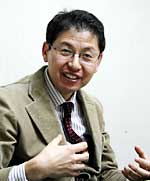The Strength of Rural Areas, Part 1
Nature and community ties support a self-sufficient life
The population of Japan today is more than 128 million. This is the 10th largest population among all nations, and the equivalent of 1.9% of the world's population, as of 2010. However, with a falling birth rate and an aging population, Japan is now witnessing a decline in its population. On one hand, in the nine prefectures where large cities are located, including the prefectures of Tokyo, Chiba, Saitama, and Osaka, the populations are growing; on the other hand, the other 38 prefectures are experiencing shrinking populations. In mountainous areas, and on islands, in particular, the population of Japan is facing a sharp decline.
Does this imply that these more rural areas aren't favorable places to live?
If you live in a big city, it's true that supermarkets and convenience stores may be located near your residence and it's possible to acquire anything you like if you have a certain amount of money.
Out in the countryside, though, you can enjoy such benefits as obtaining handmade goods, using natural products, and forming strong ties with others. For this issue of Peace Seeds, we explored how people in rural areas live a self-sufficient life, a lifestyle that can only be found in the countryside. Our coverage led us to such discoveries as sweaters made from the wool of grazing sheep, a tofu restaurant that serves dishes which use fresh soybeans and vegetables, and bakeries that sell bread made from rice, milk, and eggs produced locally.
| Clothing | Keeping sheep, supporting rural life Greenwork" in Izumo City |
A group known as "Mary's Group" is active in the village of Iikuri Higashi, located in the city of Izumo in Shimane Prefecture. The members of the group produce such things as scarves and sweaters using the wool from a flock of 25 sheep they keep there. One sheep can yield enough wool to make about four vests. Their products are sold-out a year in advance, likely due to the group's reputation for creating goods of practicality and comfort.
Forty percent of the population of the area consists of elderly people who are more than 65 years old. For them, mowing the grass around rice fields is very tough work, so an agricultural coop, called "Greenwork," composed of 30 local residents, began grazing sheep on the grass in 2005. "The sheep give us comfort, too," said the president of the coop, Tomoyoshi Yamamoto, 64. Sometimes, he said, there are many cars that have come to take pictures of the sheep grazing in a line.
Greenwork's mission involves not only agricultural management, but also serving as a business contributor to the local area. In addition to the activities of "Mary's Group," they offer a shuttle service for the elderly, taking them to the hospital or out shopping, and they manage the parks in the town. The work they engage in throughout the year generates employment opportunities. "Although we don't make much profit," Mr. Yamamoto said, "we want to take on work that the government can't do." (Shotaro Takata, 16, and Sachiko Kitayama, 14)
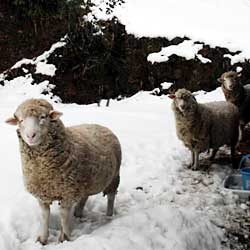 Sheep kept by "Greenwork" are sheared around the end of May and the wool is used to produce such items as vests and scarves.
|
|
| Food | Community strengthened by tofu Restaurant in Akitakata City |
In the Eno area of Yoshida Town in Akitakata City, which serves as the base for the professional soccer team, Sanfrecce Hiroshima, there is a tofu restaurant called "E-no-Yumechaya." The restaurant serves tofu meals made completely from soybeans and vegetables that are produced in the area. It is run by the agricultural coop "E-no," composed of 155 families.
When the coop families switched over their rice fields to grow another crop, in keeping with a policy of reducing the acreage of rice under cultivation, they chose to produce soybeans, a crop that can easily be harvested by machine. In order to increase the value of their production, 15 local women began producing tofu and selling it in 2001. Then, in 2003, the coop opened a restaurant to serve fresh, hot meals made with tofu.
These activities created employment opportunities in connection with producing tofu and running the restaurant. Before they opened the restaurant, the people of the area didn't regularly exchange greetings with one another, but through their work together producing good tofu, they have become friends and community ties have been strengthened. The challenge facing them now involves finding young people to take over the management of the restaurant in the future
Mayumi Tsunemitsu, 53, the manager of the restaurant, told us: "We've given our hearts to making delicious tofu dishes at the restaurant. We plan to continue serving safe, healthy food." (Shiori Kusuo, 18)
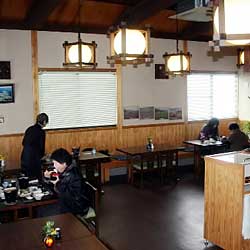 The warmth of wood can be felt inside the restaurant. Autographs of Sanfrecce Hiroshima soccer players adorn the walls. (Photo taken by Shiori Kusuo, 18)
|
|
| Community | Multi-use facility offers a place to interact Kirameki Hiroba in Niimi City |
"Kirameki Hiroba Tessei" ("Shining Plaza Tessei") in the town of Tessei in Niimi City contains the Tessei branch of the city office, a library, a health and welfare center, a clinic, and a culture hall, all under one roof. People who come to this site can do many kinds of things in one visit. Particularly for senior citizens who have difficulty getting around by car, it's a very convenient place.
The library has DVDs, CDs, and comic books. The office of the nonprofit organization "NPO Kirameki Hiroba," which offers support to local citizens' groups and mothers raising children, also welcomes many visitors.
About 58,000 people visit the facility each year. People in the area go there as many as 19 times a year, on average.
Masashi Fukai, 74, the director of NPO Kirameki Hiroba, stressed to us that "Strong ties bring this village to life." If people have a lot of opportunities to get together and communicate with one another, he said, community ties are created and fostered.
After the facility was completed, a police station and fire station were opened nearby. The local rest area along the road has a restaurant and a bakery. "If a convenience store, a post office, a branch of the Japanese Agricultural Cooperation, and a caf? were to open around here," said Mr. Fukai, sharing his hopes, "that would be wonderful." (Shiori Kosaka, 15, and Saaya Teranishi, 14)
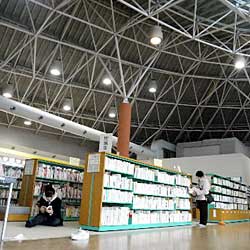 The library is open, facing the hallway. Visitors can sit and read books on the heated floor. (Photo taken by Shiori Kosaka, 15)
|
|
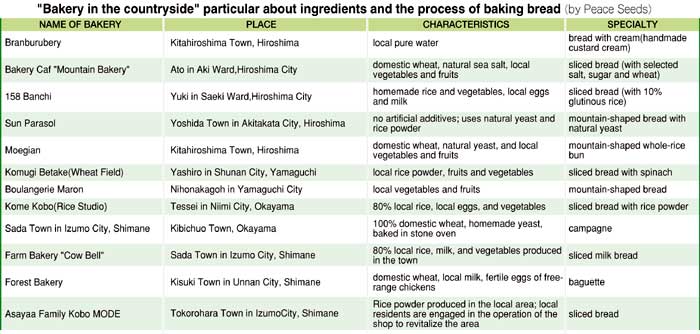 |
|

